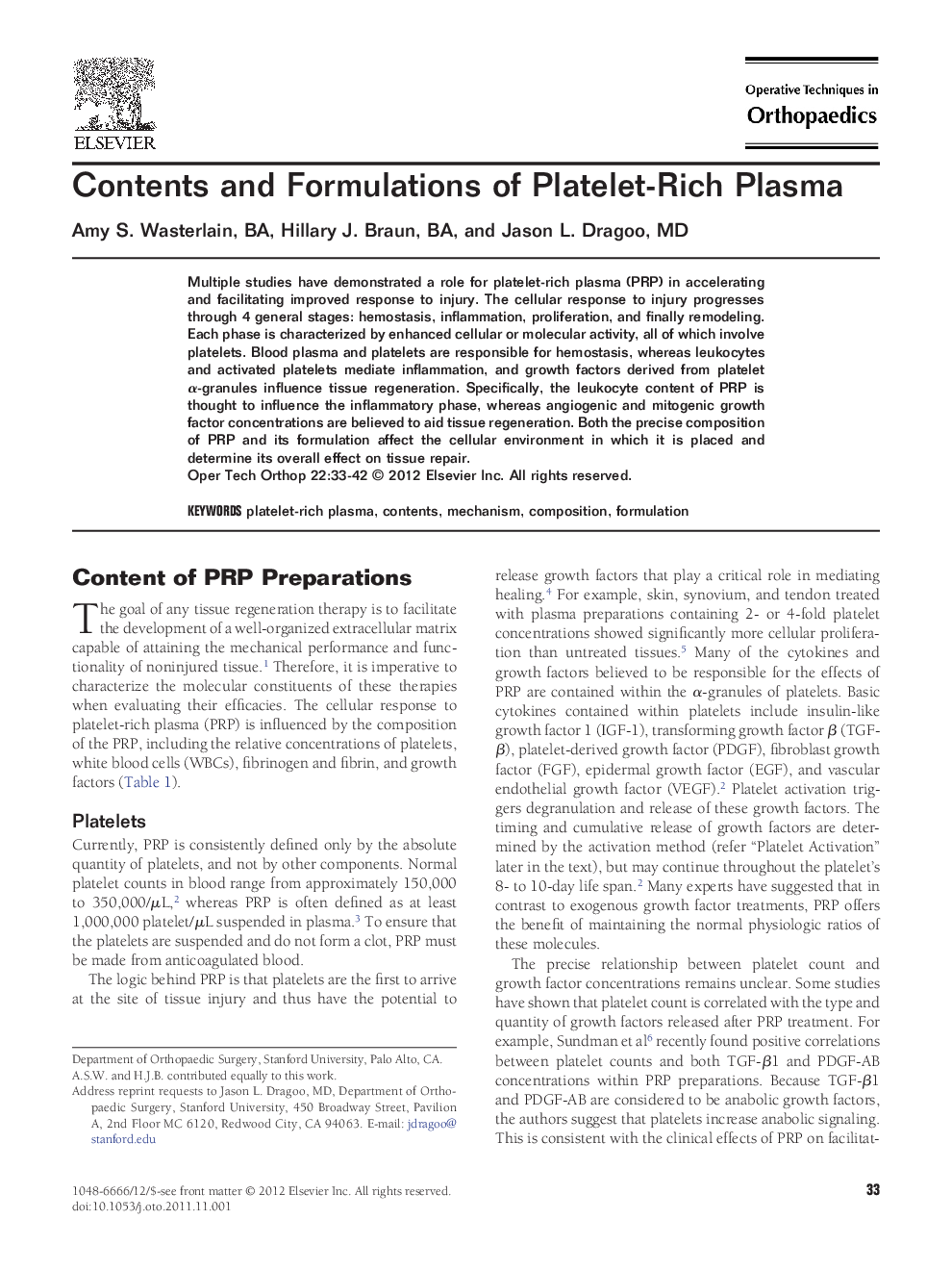| Article ID | Journal | Published Year | Pages | File Type |
|---|---|---|---|---|
| 4079021 | Operative Techniques in Orthopaedics | 2012 | 10 Pages |
Multiple studies have demonstrated a role for platelet-rich plasma (PRP) in accelerating and facilitating improved response to injury. The cellular response to injury progresses through 4 general stages: hemostasis, inflammation, proliferation, and finally remodeling. Each phase is characterized by enhanced cellular or molecular activity, all of which involve platelets. Blood plasma and platelets are responsible for hemostasis, whereas leukocytes and activated platelets mediate inflammation, and growth factors derived from platelet α-granules influence tissue regeneration. Specifically, the leukocyte content of PRP is thought to influence the inflammatory phase, whereas angiogenic and mitogenic growth factor concentrations are believed to aid tissue regeneration. Both the precise composition of PRP and its formulation affect the cellular environment in which it is placed and determine its overall effect on tissue repair.
